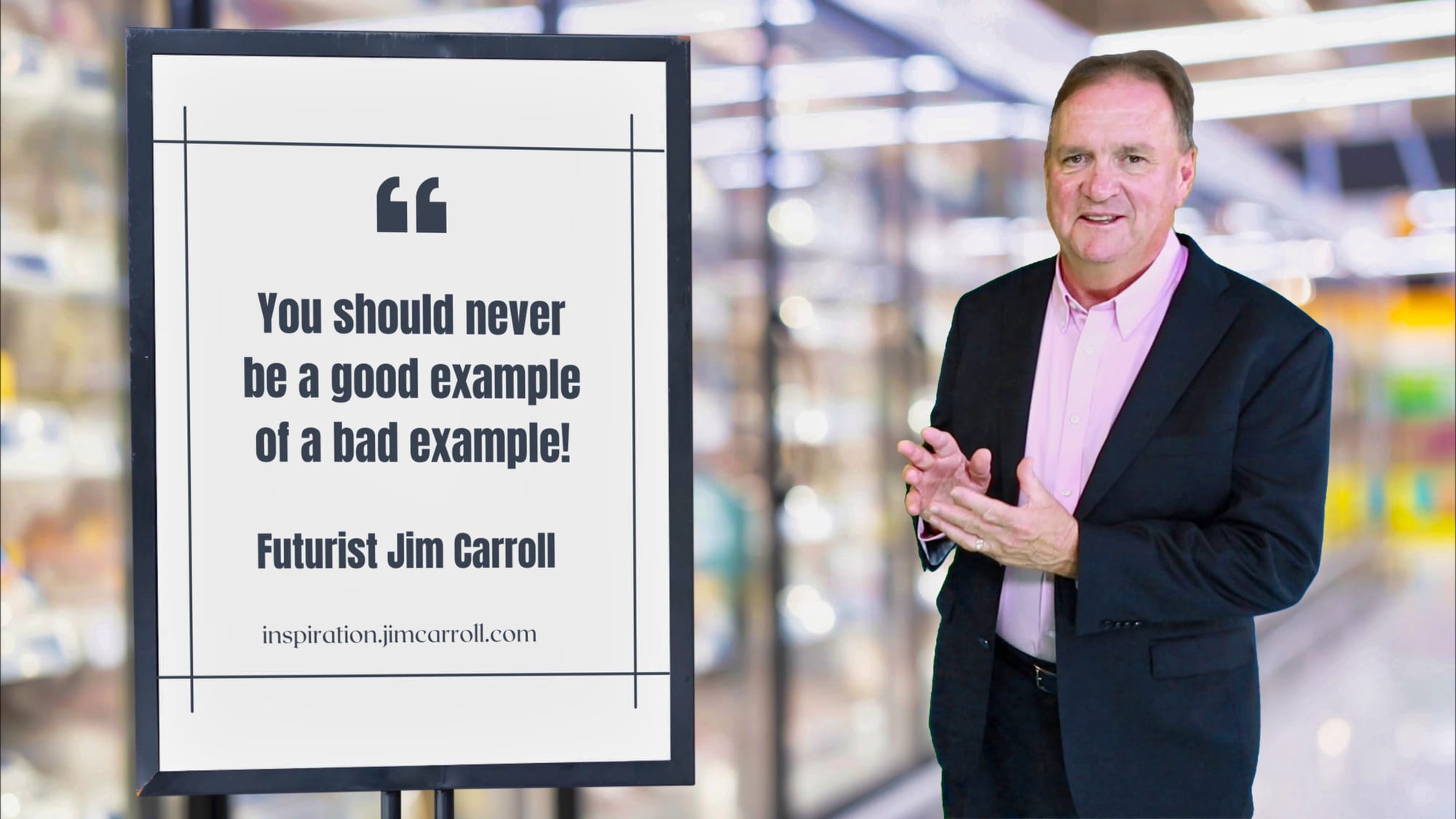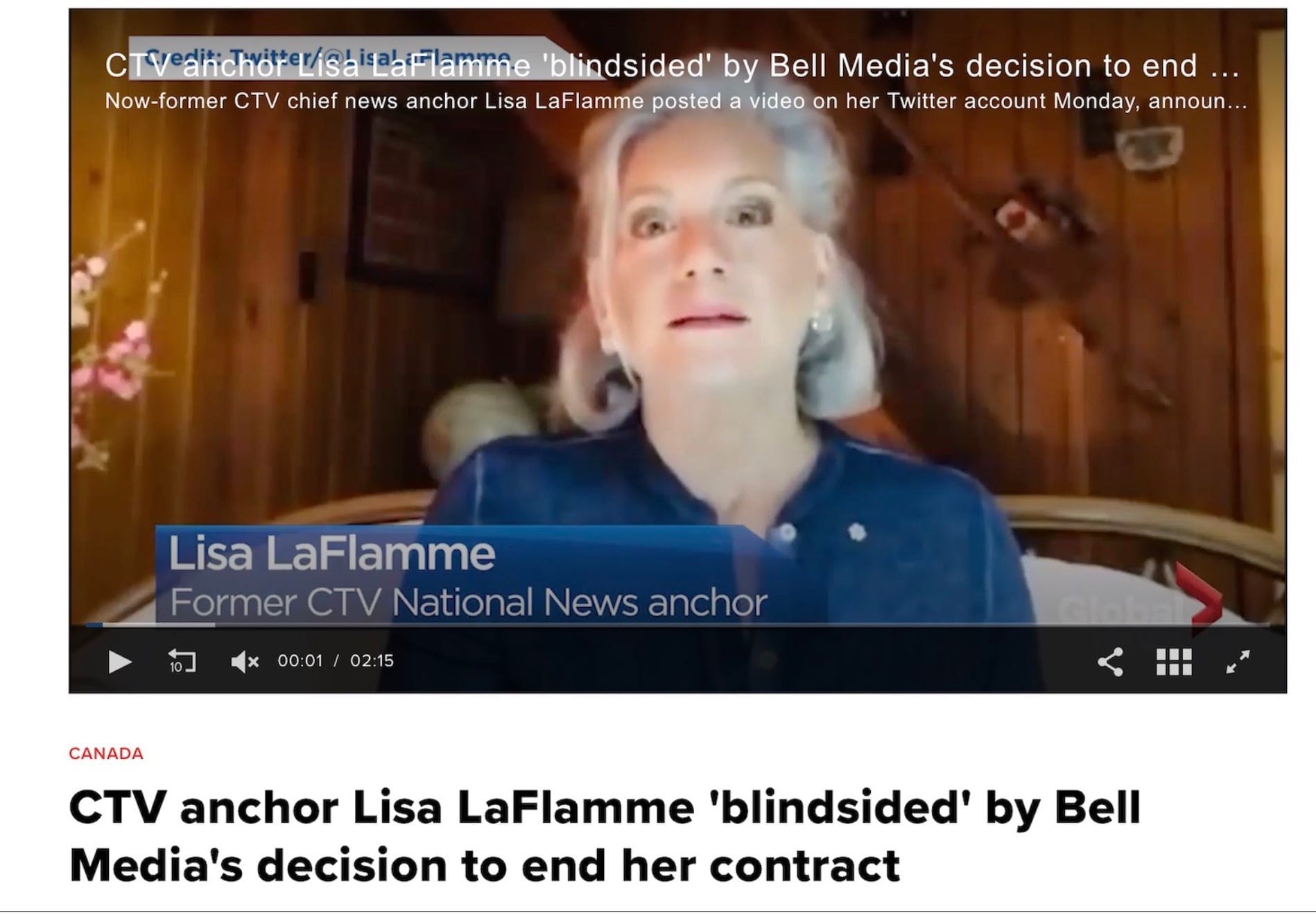"You should never be a good example of a bad example!" - Futurist Jim Carroll

If you've been following the media, pretty much anywhere throughout North America and elsewhere, you might have come across the story of the dismissal of Canada's most popular evening newscaster, Lisa Laflamme. The story goes that she was let go before the opportunity of a graceful farewell due to 'business decisions.'

And yet media reports indicate that the real reason was that the executive in charge of programming didn't like her hair going grey. And so while the parent company BellMedia is busy telling the world that this is not true - trust us!!!! - and that they are firm believers in treating all employees with respect!!!! - absolutely no one believes them. Even Wendy's got involved, tweeting support for Lisa.
Bell? In other words, they are a good example of a bad example! If you talk up a mean streak of employee values, but only deliver empty promises, people see right through you. This is an example of the power of viral news stories - things can go wrong for an organization fast with its PR, or in other cases, with customer interaction.
In other words, Bell and Bell Media are a good example of a bad example! If you talk up a mean streak of employee values, but only deliver empty promises, people see right through you.
This type of thing is nothing new, where companies get crucified as the result of bad decisions or incompetent actions with customers which are amplified in the era of social media. After all, who can forget that time that United Airlines lost a guy's guitar? Dave Carroll (no relation) wrote a song about it, it went viral and has now had 21 million views.
Of course, it seems that United excels at amplified service failures - consider another example of the situation with United Airlines where they, well, actually beta up a customer.

Reputation risk has always been an issue when it comes to customer interaction or other actions, but we all know that the challenge has been exaggerated with the arrival of the Internet and social media.
So what do you do about it?
Some years back, I was the opening speaker for the 14th Annual Process Excellence Week in Orlando - with folks from most global Fortune 1,000 organizations in the room. The focus - aligning fast-paced change to a customer-centric world, and the need to align business process to market, customer, technology, and business model change. My talk resulted in a summary foreword for their report: "Transforming customer feedback into opportunity." Three of my favorite comments as to what you need to do - so as to not become a good example or a bad example!
Fix things fast
When things go wrong with a customer relationship fix them fast. Have a communications plan. Be prepared to reassure the customer quickly. In this new era of hyper-information feedback, don’t let the customer sit and stew for a moment — proactive information and proactive action is the only weapon you have, and you have to use it.
Admit that mistakes will happen
It’s ok. It’s the 21st century. Bad things go wrong all the time. Accept that, and use that as a go-forward strategy.
“Things will go wrong and we will work to fix them fast” is a better strategy than “we plan on rolling it out and holding our breath that things don’t get messed up.”
Empower people with niceness
Customer-centricity and the instant-age demand that the customer is made happy — quickly.
Give staff who have not previously had the authority, the authority to do things to the customer that are nice. That will help to ease the early part of the “pain process.”
Every company in every industry is in a situation in which the customer is more empowered than ever before. Accept that -- work with it -- learn from it -- and use it as the base for innovation! You can read the full forward here.

You can read the full forward here.

